One-Pedal Driving Isn't Necessarily the Most Efficient Way of Driving an EV
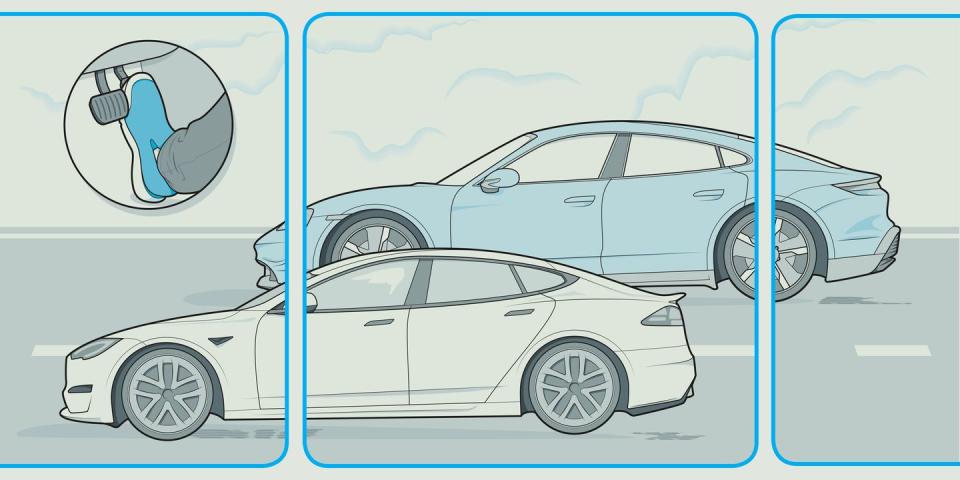
If you've ever driven a Tesla, the first time probably went something like this: Everything's going fine until you need to gently slow down. You lift off the accelerator pedal, and wham! You nearly come to a complete stop. If you have passengers, they probably hate you.
This is regenerative braking at work. With an electric car, you can use the motors to slow down the car significantly while also putting energy back into the battery. In the case of the Tesla that made it seem like you were a student driver, this is done by lifting off the accelerator pedal. A number of other EVs offer a similar feature, commonly referred to as one-pedal driving, as a car with an aggressive lift-accelerator regen setting can be brought to a complete stop without the need to press the brake pedal.
A lot of EV enthusiasts love this, and they'll tell you unequivocally that everyone should embrace one-pedal driving, as it's the most efficient way to drive. The reality, as it so often is, isn't so black and white.
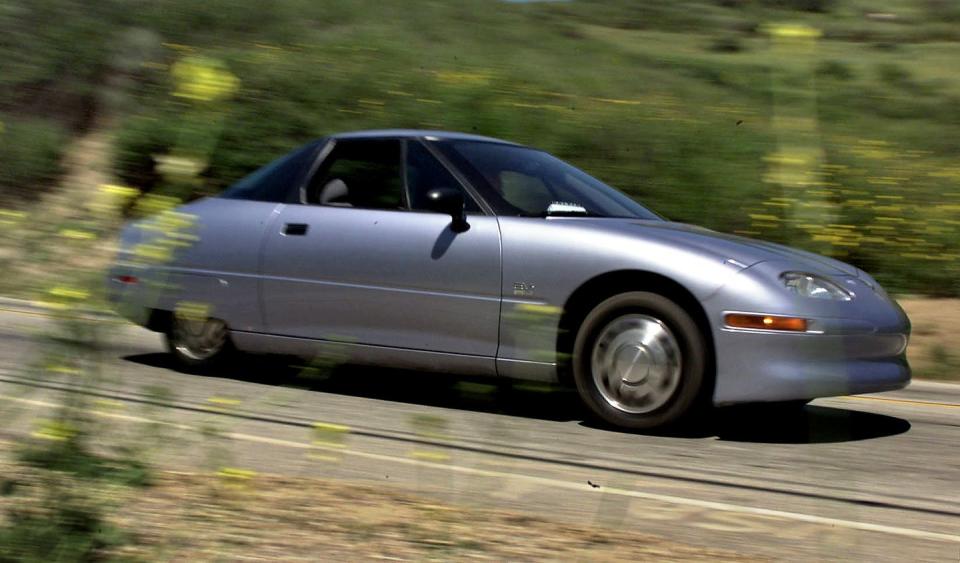
The concept behind regenerative braking dates back to some of the earliest electric cars. Jay Leno's 1916 Owen Magnetic has regen, for example. GM’s infamous EV1 used regenerative braking to improve range, which was controlled by what we now refer to as a “blended” brake pedal. When the driver stepped on the brake pedal in an EV1, the car blended both friction braking and motor regeneration with an extremely complex brake-by-wire system. A press release from back in the day noted that at low speeds, regeneration could handle 95 percent of the car’s deceleration needs.
There is a historical through-line from the EV1 to modern regen. Engineer Alan Cocconi brought regenerative braking with one-pedal driving to the EV1 from the Sunraycer solar car via the Impact prototype, and when he left the project in a huff carried it on to his own company AC Propulsion, which formed the basis for the original Tesla.
It was Toyota that brought regenerative braking to the masses with the original Prius, which also used (and still uses) a blended brake pedal. Most EVs use blended pedals to help charge the battery under braking.
(There also exists another type of regenerative braking in internal-combustion cars which takes heat energy created under friction braking and converts it into electricity to run ancillary systems. This isn't what we're talking about here.)
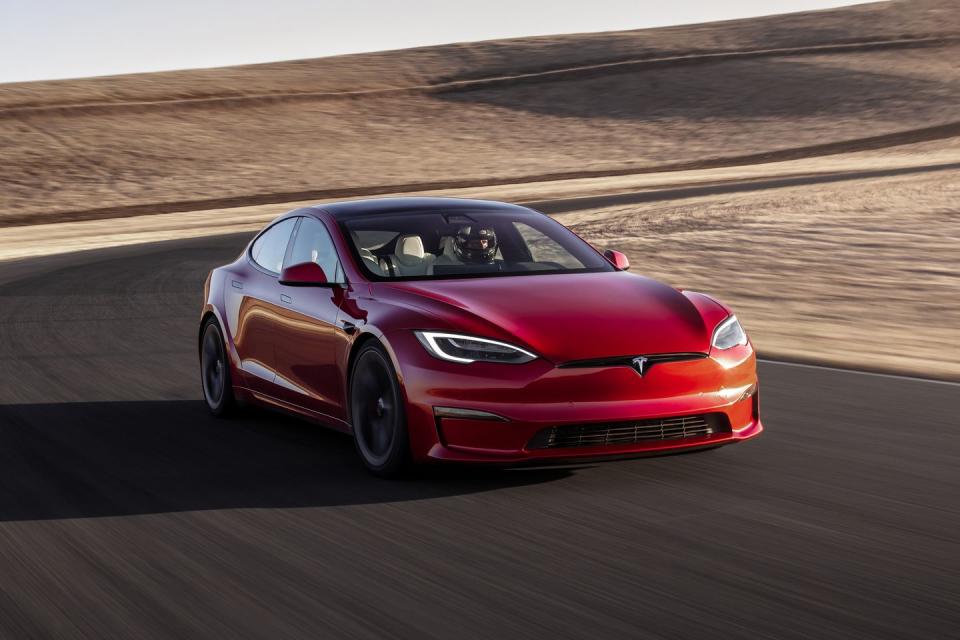
The Model S, and all subsequent cars from Tesla maker do things differently. Lift off the accelerator pedal and regenerative braking begins immediately; hit the brake pedal and you activate a traditional hydraulic circuit. I talked with Hearst Autos vehicle testing director Dave Vanderwerp about this, and he suggests that Tesla takes this approach as it provides a more natural brake pedal feel—blended pedals can often feel springy underfoot, as there’s no direct connection between the pedal itself and the hydraulic circuit—and because it was likely cheaper and easier to engineer.
Originally, Tesla gave drivers a range of lift-off regeneration settings, with a “Low” setting mimicking traditional engine braking, but a 2020 software update got rid of the choice, instead mandating high lift-off regeneration. It’s programmed to bring the car to a stop if you lift your foot off the pedal entirely.
When you could choose between regen settings in a Tesla it was more efficient to use one-pedal, rather than set the car to “Low” regen on lift. Since no motor regen is activated by pressing the brake pedal, letting the car mostly coast off-accelerator and doing the vast majority of deceleration via hydraulic braking wastes a lot of potential energy. Since Tesla no longer gives drivers choice, the car is effectively locked into its most efficient drive mode. Tesla recently started offering a feature where it blends in the friction brakes on accelerator lift to compensate if the battery can't accept the desired amount of energy from braking, as the amount of energy you can regenerate depends on a number of factors, from motor design, to battery charge and temperature.
Tesla is unique among EV makers in employing this regen strategy. A lot of other EVs offer a one-pedal driving mode, or at least a very aggressive lift-off regen that can bring the car to a near stop, but most can also initiate regenerative braking with the brake pedal, though. This is where the question over one-pedal driving gets murky.
That's because while all EV manufacturers use regenerative braking, not everyone is onboard with using one-pedal driving to harness it.
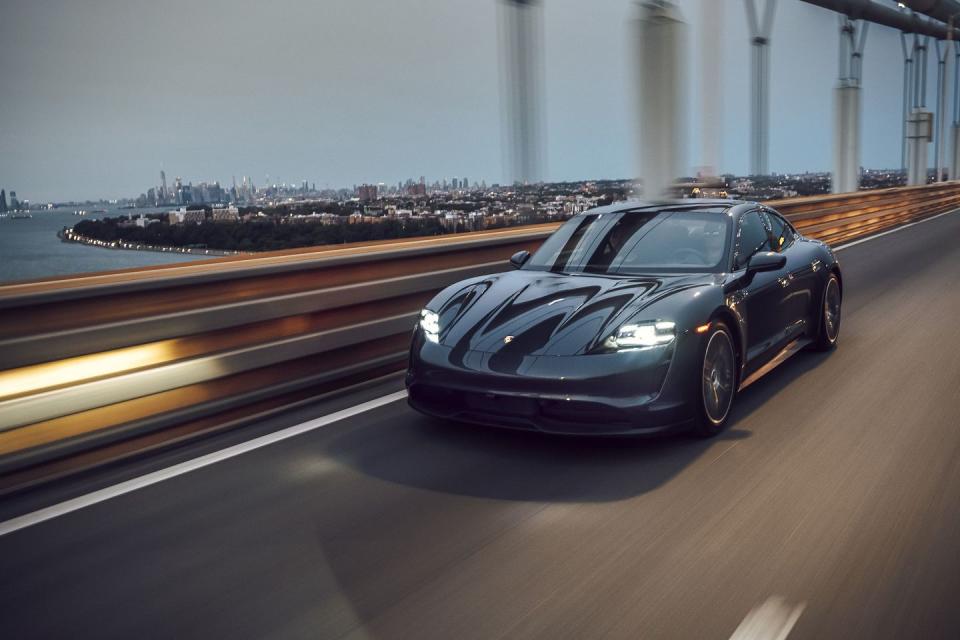
Porsche raised eyebrows when its first EV, the Taycan, debuted without offering a one-pedal driving mode of any sort. It seemed Porsche was leaving an obvious efficiency on the table, though really, it just chose to regenerate energy primarily with the brake pedal. Up to 0.3gs of deceleration—which covers the vast majority of braking events in everyday driving–is handled by motor regeneration, after which point, the friction brakes are added into the mix. Porsche proudly touts that it can put up to 265kW of energy back into the battery pack, which is more than any other automaker. Additionally, the Taycan will even continue to regen when ABS is activated.
The Taycan’s default setting has a tiny amount bit of lift-off regeneration, which feels similar to engine braking, though a button on the steering wheel activates a slightly more aggressive program. That feels more like sticking a large-engine car in second gear. There’s also an automated regen mode, which uses the car’s cameras and radar to situationally adjust the amount of regen. For example, if you come up to a slower car ahead on the highway, the car will automatically regen a bit more to slow down. The car will also make minute regen adjustments based on the environment too, like if you’re going down a hill.
Porsche claims this is the most efficient way of doing things, so there’s no need for a one-pedal mode. It’s also more natural to how most people drive, especially when driving spiritedly. On track, it makes more sense to have a predictable, gradual deceleration when lifting off the right pedal, and to control all larger braking events with the brake pedal. This is a little silly as while the Taycan is track capable, it’s not a track car, but this approach also makes for smoother, safer driving on your favorite twisty roads.
The Taycan made me wonder if the one-pedal thing was a bit of a gimmick when the car is capable of actuating regenerative braking in other ways. If you’re coming to a complete stop from, say, 35 mph, what’s the difference if the regen is activated by lifting off the accelerator and pressing the brake pedal?
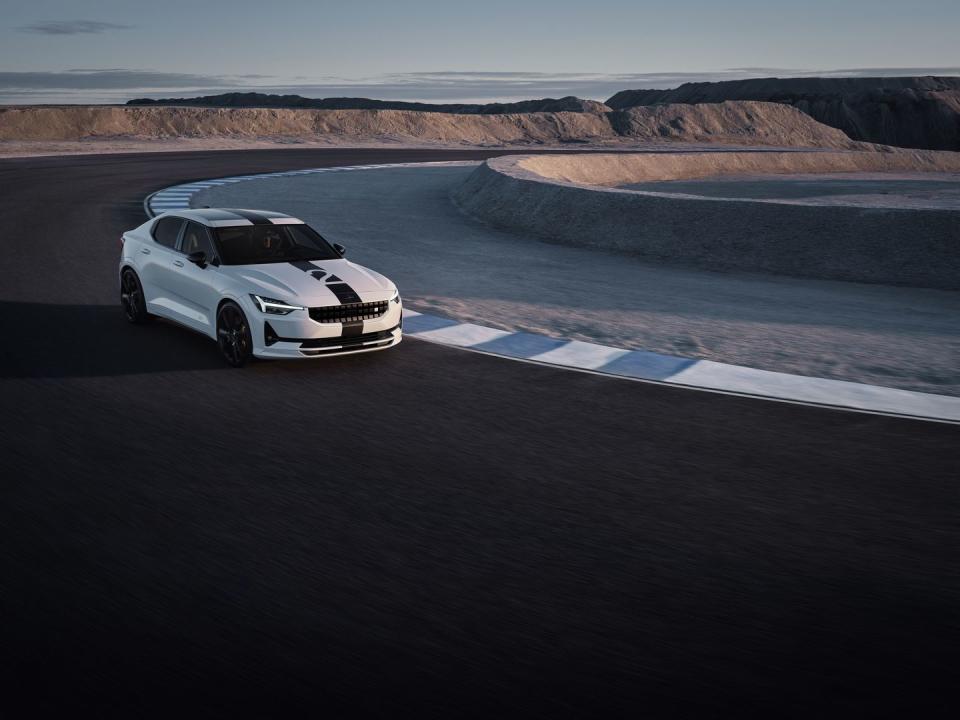
A rep from Polestar, told me that like-for-like, there is theoretically no difference in its cars, which offer a one-pedal mode but also use a blended brake pedal. He also added that one-pedal driving is actually less efficient on the highway, likening it to dragging a boat anchor around, making it extremely difficult to maintain a constant speed. Obviously, this isn’t an issue if you just turn on cruise control and just forget about it as the car does all the work, but not everyone uses cruise control, especially on busy highways.
Folks at Polestar often use one-pedal around town as it’s efficient and convenient, but switch it off on the highway. With its newest EVs, the i4, iX, and i7 BMW offers an Adaptive regen program that uses camera and sensor data in concert with navigation data to constantly adjust the amount of regeneration you get with accelerator lift. On a level highway, it’ll “sail” losing speed very slowly, a feature enabled by the automaker’s unique three-phase AC Synchronous motors, which forgo rare-earth magnets and use an electrically activated stator. Unlike many other electric motors, BMW’s can freewheel, increasing efficiency in scenarios like this. The Adaptive mode works similarly to the Taycan's in other scenarios, applying a small amount of regen downhill, or more if there's traffic ahead of you. Additionally, the car will learn your most frequent routes and change the regen program to eke out a bit of more efficiency on the commute.
Using Adaptive regen is the most efficient way to drive a BMW, but the company offers other settings to better accommodate user preference. A more aggressive regen program not only appeals to Tesla drivers, but those coming from BMW's first EV, the i3, which had a true one-pedal driving mode. BMW also regens on the brake pedal, offering around 0.2 g of deceleration before the friction brakes get blended in.
Stephen Kosowski, Long Range Planning Manager for Kia North America says that choice with regen settings is good. "It comes down to circumstance and situation," Kosowski tells Road & Track. "Regen braking really enables driving style variety for EV drivers: Some like less, some like more, and the variation in settings gives them flexibility." Additionally, Kia has data indicating that its EV drivers actually do vary regen levels using the paddle shifters attached to the steering wheel. Kosowski echoes the comments from other automakers too, saying that one-pedal driving—i-Pedal in Hyundai Motors vernacular—isn't necessarily as efficient in stop-and-go driving, and could be less efficient on the highway.
If there's any conclusion to be drawn here, it's perhaps that you don't need to worry so much about one-pedal driving. It's a neat feature, and you may simply prefer this novel way of controlling your car, but if you don't like it, chances are you're not leaving a lot, if any, extra range on the table. I would argue the best solution is just to drive how you like, and let hypermilers worry about how to find tiny efficiency gains. Thankfully, most EVs offer a range (no pun intended) of regen options. It's really just Porsche and Tesla that are very specific in their philosophies.
As for myself, I tend to like a fairly low regeneration setting. Once in a while it's fun to do one-pedal around town, but it also requires ultra-precise right-leg control, and that gets exhausting after a time. BMW and Porsche's adaptive settings are neat, but in the short time I've spent in their EVs, I've never fully been able to get used to them. I'd rather have a consistent response every time I lift off the accelerator, even if that means I've got to step on the brake pedal from time to time. The amount of energy you can regenerate depends on a number of factors, from motor design, to battery charge and temperature. Tesla recently started offering a feature where it blends in the friction brakes on accelerator lift to compensate if the battery can't accept the desired amount of energy from braking. In a strange way, we've come full circle.
For automakers, I think the best way forward is customer education. An EV is a different animal from an internal-combustion car, or even a hybrid, and drivers should at the very least get an explanation of the different philosophies here, and getting good answers shouldn't take the level of resources that someone like myself, a journalist with a direct line to lots of OEM reps, has. If EVs are our future, and it sure seems like they are, this is crucial.
You Might Also Like

 Yahoo Autos
Yahoo Autos 